The message is clear - consumers want to travel again. The intent is there. Many data points paint a picture of pent up demand, driven by our collective social isolation and national impatience. We’ll get to that data in a minute.
However, when put in practical terms, we can’t help but think there’s something huge missing in this equation, and that is fear.
Fear of the unknown. Fear of the unseen. Fear of the guy sitting in 26D.
The human toll of COVID-19 remains to be seen. But the fear and general sense of unease it generated has already impacted our decision making process and personal well-being.
There are critical questions that haven’t been widely addressed from a behavioral psychology perspective, as they pertain to the travel recovery timeline:
- What is the psychological toll of the COVID-19 crisis?
- What might this mean for travel recovery timelines?
- How will different demographic groups think differently about emerging from isolation?
- What are the implications for travel marketers, as they walk a tightrope between consumer sensitivities and maintaining engagement?
Not having a PhD in psychology ourselves, we spoke to someone who does.
Jamie M. Howard, PhD, is a senior clinical psychologist in the Anxiety Disorders Center at the Child Mind Institute in New York, and the director of the center’s Trauma and Resilience Service. She specializes in the evaluation and treatment of anxiety and mood disorders in children and adolescents. She also brings expertise in treating post-traumatic stress and adjustment disorders across the lifespan.
With Dr. Howard’s guidance, we take a closer look below at the psychology of the recovery and the practical implications for the travel industry.
Moving beyond intent
We all want an escape from the Groundhogs Day lifestyle of these last few months, and the numbers prove it.
According to the latest research from travel marketing group MMGY and the US Travel Association, nearly 40% of Americans say they plan to take a domestic leisure trip in the next 6 months. This is an increase of 7% from early April.
Somewhat surprisingly, 20% of those surveyed say they are planning to travel internationally during the same time period.
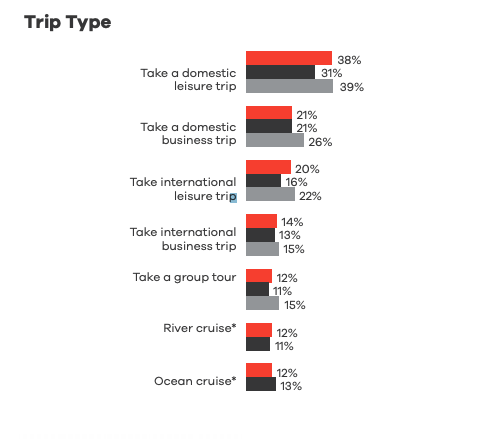
Dark red bar represents latest survey data from April 24. Light gray shows data from March 27.
This data is hugely valuable and points to some green shoots ahead, as do the early booking trends coming out of countries such as China.
However, looking solely at these data points would lead us to believe that we’re perhaps close to a significant recovery in the United States. That’s far from a sure thing.
As an industry, we need to dig past the surface of intent-driven metrics to engage in conversations around deeper seated issues affecting the recovery. If we don't, we risk doing ourselves, and our customers, a disservice by failing to address the current and potential future psychological impact that COVID-19 has left in its wake.
Only then can we restart the travel economy and communicate to travelers in a thoughtful manner.
So where does ‘intent’ end and ‘action’ (bookings) begin?
According to Dr. Howard, it’s all about our natural drive as humans towards self-preservation.
“We like to stay alive,” says Howard. “It’s unclear right now how safe it is because we’re getting mixed messages. There’s too much uncertainty…when there’s a little more clarity about relative risk, I think people will be more willing to make a calculated risk [to travel]. But we’re not in control of that calculation right now.”
At the macro level at least in the United States, it might be a while until mass testing and contact tracing programs are at full capacity. With increased testing comes data on infection rates and with that, perhaps details emerge that help people make educated purchase decisions.
Within travel, some companies are already leading the charge.
Most major U.S. air carriers have implemented PPE policies for their staff, with some extended to the flying public as well. This serves to mitigate some, but not all, of the risk associated with flying in the age of COVID.
The fear factor
No, we’re not talking about the amazing Joe Rogan show from the early 2000’s.
Although, thankfully, we seem to be on the downward slope of infection and death rates in some major American cities, the fear is not receding.
Earlier in April, Skift reported that ⅓ of travelers wanted to take a trip within three months after stay-at-home restrictions were lifted. However, Skift added that “the lingering fear about the virus and the new routines developed during the shelter-in-place seem to lead to changes in travel patterns…”
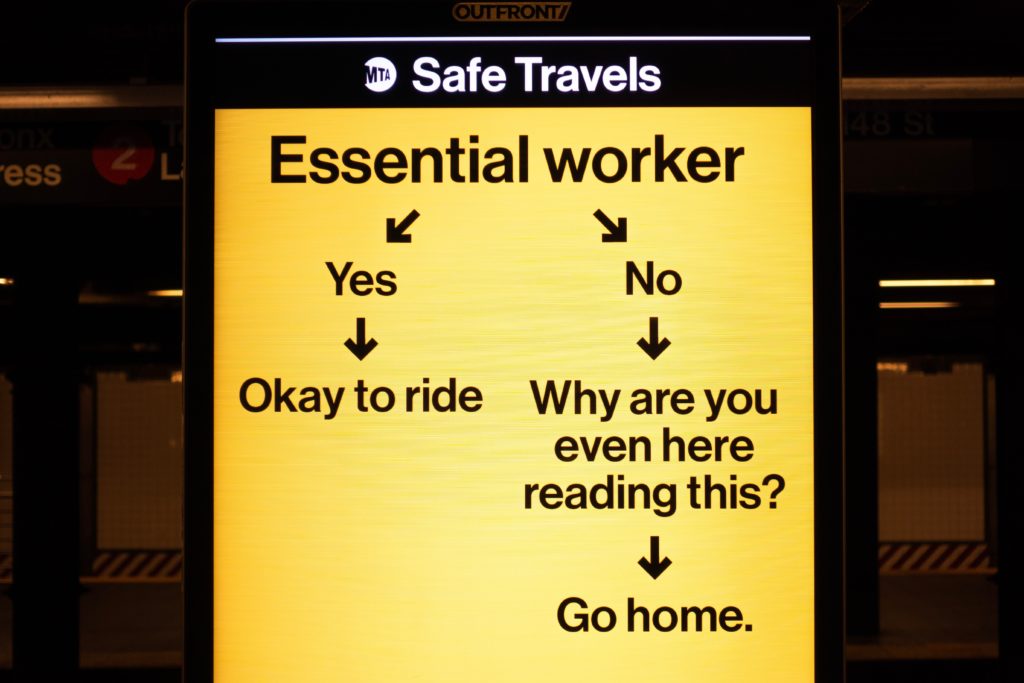
It’s a two-headed monster - the fear of returning to society without a vaccine or treatment plan in place and fear of the unknown and what’s to come.
The byproducts of fear are anxiety and depression, and both are unfortunately on the rise.
According to ThriveNYC, New York City’s multi-agency partnership to close gaps in mental healthcare, website traffic rose by 58% in April vs. March of this year.
Yale University conducted a nationwide poll in early April and asked ‘how much, if at all, has worry about the coronavirus harmed your mental health?’
A majority of respondents, 54%, said their mental health was harmed at least ‘a little.’
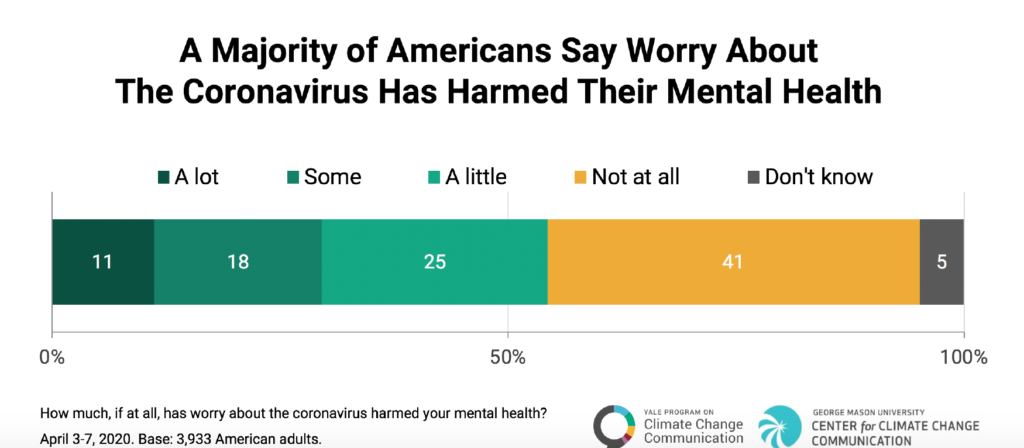
Dr. Howard says that, in this case, anxiety is driven primarily by the uncertainty surrounding the virus and what comes next. She believes that for most people, the single biggest game changer will be easy access to a vaccine.
There are, however, different factors that contribute to an individual's overall tolerance of uncertainty and fear. For example, those with pre-existing diagnoses of anxiety or depression may have a lower capacity for tolerance, and thus a harder time adjusting to our new normal of COVID co-existence.
Even for people with clean bills of mental health, rational decision making around when to go into the office, when to send kids back to school, and yes, when to travel again, might not be possible until the warm blanket of a vaccine is available.
We also asked Dr. Howard about PTSD (post traumatic stress disorder), and whether we as a society will experience some form of it.
She stated that although this is a stressful time, for most people, it’s not technically a traumatic event. To experience true trauma, there needs to be an immediate physical threat to your life or to others, where you are a witness.
This means PTSD could still affect some Americans, unfortunately including first responders and those on the frontlines of the pandemic.
On the topic of PTSD, Howard adds "for most people this is a significant stressor, but does not rise to the level of trauma because they aren't worried about being in acute risk of danger. For many people, social distancing and the economic impact are just as stressful as the risk of getting sick."
If you’re a ‘glass half full’ kind of person, perhaps there’s a positive spin to all of this.
By and large, we aren’t going to be a nation or world suffering from the very real and debilitating effects of PTSD. Although this is a very stressful time with balancing work and kids, disinfecting our packages, and fearing the grocery store, perhaps our natural resilience will power us and the recovery.
On the flip side though, is it that hard to imagine a world where a vaccine eludes even the finest medical researchers for a year or longer and uncertainty persists?
The demographic divide
We all watched the throngs of spring breakers bask in the Florida sun while infection and death rates soared.
It turns out, the brazen acts of what seemed like stupidity by the Gen Z spring breakers has a more practical, developmental explanation. For teens and young adults, being with peers is more important than almost anything. This includes the camaraderie that comes with a group vacation.
Why?
Thinking back to high school biology class, you might recall that the frontal lobes of the brain (actually two halves) are not fully developed until age 25. Those lobes are pretty important as they control cognitive skills such as emotional expression, problem solving, memory, and, yes, judgment!

As Dr. Howard so rightfully says, “this explains the risky behavior in teens and young adults and also leads to that feeling of invincibility that we’ve all experienced.”
In case you were wondering, the oldest Gen Z’ers are currently 25 years old.
On the other side of the demographic spectrum lies baby boomers. These frequent travelers, and still the generation with the highest average spend per trip, have been told to stay away from their grandkids and practically everyone else, while the virus circulates in our society. So it would make sense that the older generation might be the last out of the recovery gate.
Dr. Howard agrees, saying “people start to be worried about their own physical safety as they get older.”
Yet, this seemingly rational take on boomers doesn’t exactly jive with some of the other research we’re seeing in the market.
Remember the Yale University survey from earlier? It asked various groups how worried they were about being unable to access medical care.

Nearly a quarter of those aged 60 and older answered ‘not very’ - more than any other age group. Only 56% of boomers were at least ‘somewhat worried,’ compared to 67% of older Millennials and younger Gen X’ers.
This study also found that boomers are the most resilient demographic segment when it comes to the disruption that the coronavirus has had on daily life.
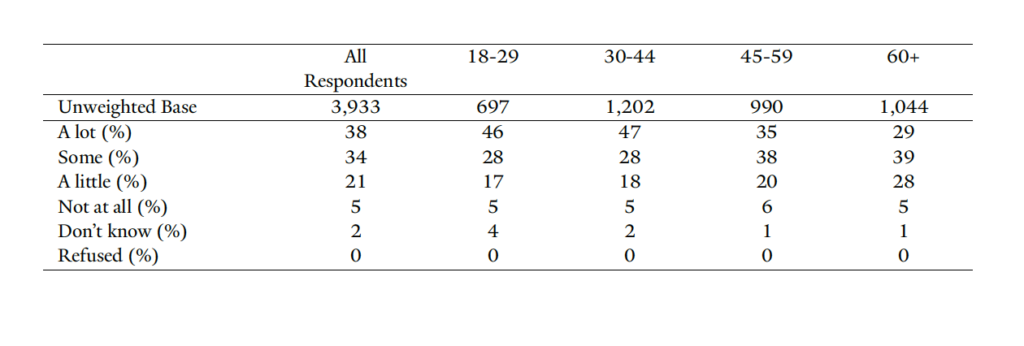
Less than one-third of those 60+ say the virus has disrupted their lives ‘a lot’ compared to nearly half of Millennials and Gen X’ers.
Of course this makes some intuitive sense. Boomers are more likely to be retired, without school-aged children and on firmer financial footing than their younger counterparts. Some could also be on Medicare, which could provide at least some assumed security around access to healthcare.
Additionally, Boomers have lived through tumultuous times before - the Vietnam War and multiple recessions come to mind.
Despite the seemingly nonchalant reaction that Boomers have had to the virus, we’re betting that this demographic segment lags behind others when it comes to stepping out and traveling again. Considering the very real elevated risks that Boomers face, they will opt for isolation where possible, whether this means trips in the RV or perhaps a summer or fall visit to a second home.
What about families?
Speaking from personal experience here, there is perhaps more pent up demand among families for an escape from everyday life than among any other demographic. Most children are out of school since March and not going back this year - or even by the fall. With many summer camp programs cancelled as well, parents are facing a long, hot, rambunctious summer.
What most families want right now is exactly what they can’t yet have - a vacation.
We asked Dr. Howard, who specializes in therapy for children and adolescents, when she thought the average parent might feel in control of the situation enough to book a family trip.
She mentioned that, consciously or not, all parents focus on protecting their children as a priority. For most families, this means no trips to Disney, or anywhere else involving air travel, until a vaccine is available.
However, local trips are a definite possibility. With the entire family likely home over the summer, areas like short term vacation rentals (STVR) might see a boom in stays for weeks, if not months, in duration. Of course, this is assuming that popular summer destinations, including public beaches, open or remain open.
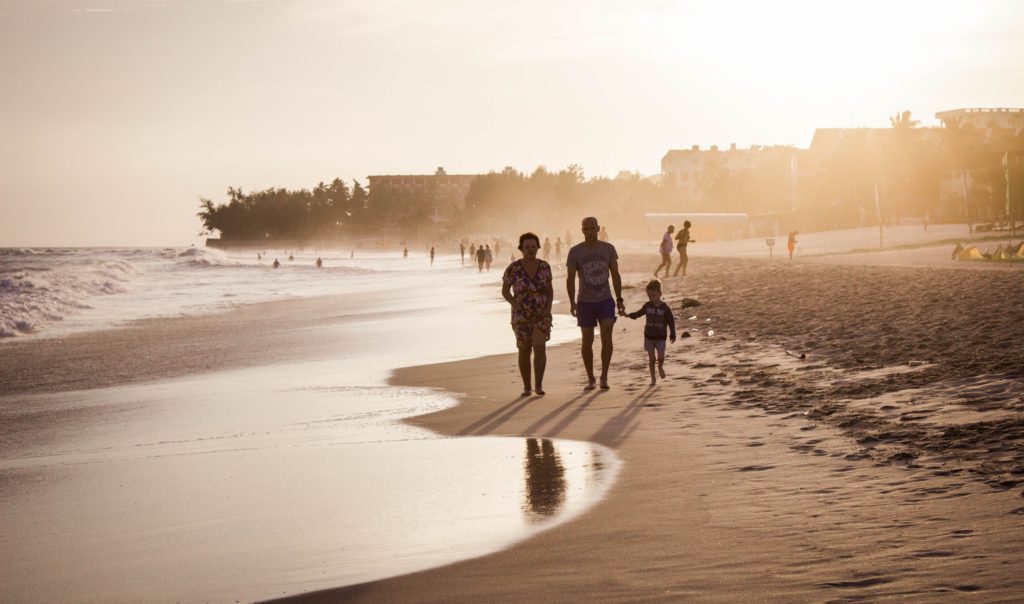
So what’s the takeaway?
According to our conversation with Dr. Howard, it seems that lingering anxiety, uncertainty, and a certain level of fear might unfortunately drive purchase decisions for families, including Millennial families, as well as baby boomers. Some sectors, such as STVR and campgrounds could pick up some pent up demand over the summer season, but longer haul destinations will certainly be left out of the peak travel season.
As painful as it sounds, travel companies need to seriously consider, and then forecast, what the landscape looks like if boomers refrain from international travel for a year, or more. Now is the time to pivot product marketing strategies, or at the very least, have a well-mapped plan waiting in the wings.
We as an industry should be able to rely on families for road trips; potentially theme parks and other outdoor attractions within driving distance. But even that might be dicey if you subscribe to the ‘self preservation’ school of thought, echoed earlier by Dr. Howard.
As far as those rule-breaking Gen Z’ers, while they might be developmentally less risk averse, they don’t have the spending power of other groups. However, it’s a well-known fact that these digital natives crave unique, social media-worthy moments which may create opportunities for travel brands or destinations that might not have previously considered Gen Z a target market.
Marketing implications for brands
Renowned digital analyst and anthropologist Brian Solis once said:
“Social media is more about sociology and psychology than technology.”
-Brian Solis
This statement can in fact be extended across the marketing spectrum to all channels.
As the national psyche has been tainted with the aftermath of COVID-19, we as brand leaders and travel marketers need to dig deeper into the minds of our audiences.
Everyone is on edge; tensions are high; consumers are ruthless if they think a brand is taking advantage of the current situation.
Marketers’ largest challenge in crafting post-pandemic messaging is the balancing act of assurances vs. sensitivity.
The good news is that consumers are more interested in, well, good news - about your brand!
According to a recent Ipsos survey, all data points to increased engagement levels with advertising post-COVID vs. before:
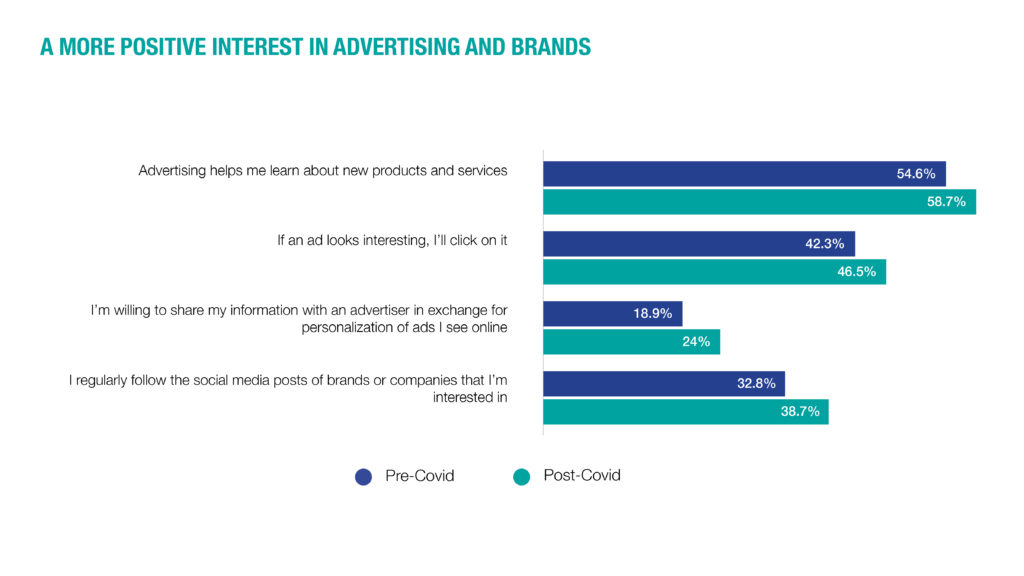
Consider the following strategies to sensitively reintroduce consumers to your brand or destination:
- Appeal to the sense of collective restlessness. Everyone wants to get out and explore, even if it’s just a neighboring state. Escapism can definitely be a part of your message, if it fits with your brand overall.
- Reassure and build confidence, but don’t overstep. State the facts - what assurances can you provide to consumers that your destination/property/attraction are clean and safe, without overpromising or contradicting medical professionals?
- Make travel a smart, informed purchase. Again, customers will feel mentally better about purchase decisions once assumed risk and uncertainty decreases. What can you say to help them, without being disingenuous?
- Don’t be too literal by repetitively using words like ‘COVID, ‘coronavirus,’ or ‘pandemic’ when trying to reassure audiences of health and cleanliness standards. This could trigger an unintentional negative emotional response. Airbnb does a good job of using their existing value proposition of ‘togetherness,’ which now brings new meaning.
- Decrease uncertainty by helping consumers to feel in control. Continue with flexible cancellation policies, create consumer-friendly payment plans, and monitor social media for signs of customer concern.
- Know your customer personas. Go beyond demographics to the world of psychographics. What are your customers’ behaviors, personality traits, aspirations? Create detailed personas and give them names - yes, actual fictitious names - and use them to guide your marketing.
- Be human and stay true to your brand ethos. Empathy works well - especially in travel, as we’ve had a very tough few months. It’s okay to be emotional but don’t labor on the negative. Resist the urge to force your brand to be something it wasn’t pre-pandemic.
- Be ready for intent to return, but count on it to change. Consumers are already starting to search for travel related terms, but the patterns are different than a few months ago. It’s vital that your site and content have pivoted as well to capture this new age of travel search intent. For example, T&L published this article just a few days ago, and it’s already ranking on page 1 of search for ‘road trips from NYC.’
- Personalization is more important now than ever. Each individual customer will return to the market at a different pace. Knowing where each person stands relative to the messaging they’re receiving means less risk of appearing tone deaf or insensitive.
- Remember the reality. Until a vaccine is found and distributed, a large swath of the traveling public will have at least some reservation about booking a trip. Recognize this risk. It’s not your job to convince them that their fears are misplaced. Continue to add value and engage, and your customers will reward you with loyalty in the future.
Adapting to overcome: our new value system
The travel industry has experienced a precipitous fall from our mighty pre-COVID perch. That much is sure.
But it’s worth it to note that we fell from the top rung of the ladder. We climbed up from near the bottom after 9-11, got knocked down a few rungs with the recession in 2008/09, but got back up again and emerged stronger than ever.
By almost all metrics, across all sectors, the global travel economy had never been stronger than it was up until 2020.
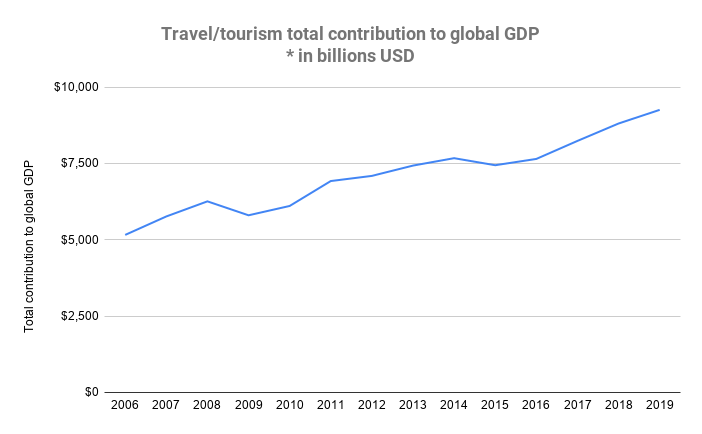
That we fell from the top compounds the pain we are experiencing. But it will also make the recovery that much sweeter to enjoy.
Just like the industry itself, travelers want something positive to grasp onto.
As Dr. Howard put it, “people want to believe there is a tangible end to this.”
Psychologically, for our collective mental well-being, there must be an end.
There comes a point in time where our lack of mobility becomes too much to deal with. Where the stress of staying home exceeds that of venturing out. According to Dr. Howard, some of us might already be there.
She adds, “we’re just about there and depression is a real risk. Something has got to change. People need human interaction. Standard treatment for depression includes a concept known as ‘behavioral activation,’ which really just means being around people in an active and engaged lifestyle.”
Travel, among other activities, provides a heightened sense of engagement with one's surroundings. If for no other reason than that it’s hardwired into our brains, we will travel again.
We’ll close on the concept of ‘post traumatic growth.’
This is the notion that people who survive some form of trauma or severe stress experience a shift towards the positive regarding their value system and how they live their lives. In our current situation, post traumatic growth will be displayed by enhanced value placed on freedom of movement and human connection.
The parallels to travel - the global movement of humans and the sharing of common ideals - is all too obvious.
In a current world void of travel, of connection, tourism professionals play an outsized role in shaping the recovery not only of our industry, but the collective healing of millions of individual mentalities.
It’s bigger than travel or any single segment of the economy.
By subscribing to the true practicalities of our current situation, realizing that our valued customers want to travel, but might not be mentally prepared yet, we will not only recover faster, but with more conviction.


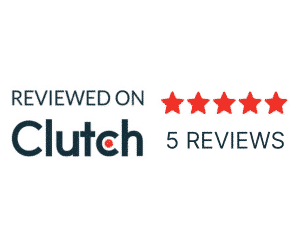
No comments.